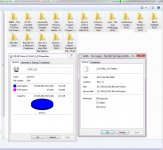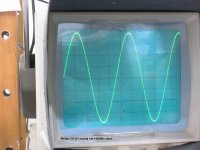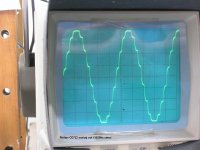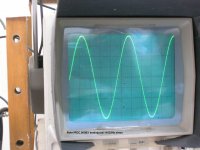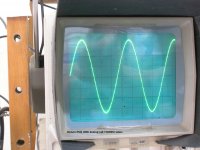They don't to me and many others.
They do seem that way to me and many others.
Helps to compare to the original master.
THx-RNMarsh
They do seem that way to me and many others.
Helps to compare to the original master.
If I wanted to spend the time and money I would listen to live music, I have no interest in arranging this (even if I had the connections) . As for HiRes digital copies from supposed "masters" as I said there is a large enough group of folks that have published at length "why bother" I suspect I'm in that camp.
They do seem that way to me and many others.
Also known as "The Peekers Club".
If I wanted to spend the time and money I would listen to live music, I have no interest in arranging this (even if I had the connections) . As for HiRes digital copies from supposed "masters" as I said there is a large enough group of folks that have published at length "why bother" I suspect I'm in that camp.
Well, good for you.
I have read them too and visa versa opinions as well. I do not often go only by what others say or pick a side when it comes to reproduction, but listen and measure and make my own conclusions. I have made my own master recordings which I have to compare as well.
THx-RNMarsh
Last edited:
"Why bother" is offset by the ultimate convenience of CD mass storage.
Why would we go back to CD or LP when one can have 2000 CD's on a
38$ Newegg terabyte hard drive ? (below).
The Blue-ray is "god" - 107 lossless CD's on one disk !
As far as "master" quality , I have some recent acquisitions that have
skipped the optical/ripping (CD) step. But does a new direct 192k lossless
bring more satisfaction than an older remastered 1980's original CD ?
OS
Why would we go back to CD or LP when one can have 2000 CD's on a
38$ Newegg terabyte hard drive ? (below).
The Blue-ray is "god" - 107 lossless CD's on one disk !
As far as "master" quality , I have some recent acquisitions that have
skipped the optical/ripping (CD) step. But does a new direct 192k lossless
bring more satisfaction than an older remastered 1980's original CD ?
OS
Attachments
I'm on Richard's side, I have several vinyl and CD versions of classic rock material that i've heard for 40 years also remastered as HD downloads or on DVD and Blue Ray disks.
Dark Side of the moon as 24/192 - you should hear the incredibly greater detail in the clocks -, Neils Young's Blue Ray remasters, Court of the Crimson King, well over 100 HD alblums. I have an all fet, totally direct coupled system with Poodged full range electrostatics and JL subs . It is clearly evident to me that the high bit rate/ high sample rate material is superior to everything else I have - Oracle VI / SME V / Dynavector XX-2 turntable. An Oppo transport and Borbelys Jfet/Fet discrete dac with Jung and shunt regulators does the digital. A 45 RPM vinyl remaster of Muddy Waters Folk Singer is pretty dam good though
If you can't hear it save the money, I'm not keen to rebuy for the 5th time, but it is the best - your mileage may vary
Dark Side of the moon as 24/192 - you should hear the incredibly greater detail in the clocks -, Neils Young's Blue Ray remasters, Court of the Crimson King, well over 100 HD alblums. I have an all fet, totally direct coupled system with Poodged full range electrostatics and JL subs . It is clearly evident to me that the high bit rate/ high sample rate material is superior to everything else I have - Oracle VI / SME V / Dynavector XX-2 turntable. An Oppo transport and Borbelys Jfet/Fet discrete dac with Jung and shunt regulators does the digital. A 45 RPM vinyl remaster of Muddy Waters Folk Singer is pretty dam good though
If you can't hear it save the money, I'm not keen to rebuy for the 5th time, but it is the best - your mileage may vary
If you can't hear it save the money, I'm not keen to rebuy for the 5th time, but it is the best - your mileage may vary
My mileage does vary I will save the money.
I'm glad that there are some people besides Richard and me who have invested into their playback system to the point that they can hear the difference between standard CD quality and HD downloads, etc.
Only here on this thread does it seem to some that audio is mature enough that standard product is all you need. Hi end is not dead, it just avoids this website. '-)
I 'hang' with people on a daily basis who do hear differences, often even better than I do. They are more informative, than the double blind convinced people who have turned into 'Randites' scoffing and condemning any other listening opinion than their own.
On the other hand, I do take a stand on some commercial tweaks that do indeed appear to be 'money makers' depending entirely on psychological marketing to convince people to buy their product. I even NOW tend to avoid certain controversial tweaks that are enthusiastically accepted by others, because I am getting too old to necessarily hear the potential difference, and the price of trying is outside my income. Some people, some of whom are my colleagues, just don't try hard enough to 'prove' whatever they are making or selling enough that I can now stand behind them wholeheartedly, anymore. It is just too hard to defend them on my own.
Still tweaks still work in my system generally, and I am always interested in getting better sound quality from tweaks or mods in my existing design. If I wish to continue to make competitive designs in the audio marketplace, I have to keep an open mind about what might make a better amp, preamp, whatever, as well as try to bypass the potential weaknesses in audio designs that I cannot design myself, like the OPPO 105.
Just listening to it stock, I found it good, but not engaging, so I don't use it very often. I am going to try advanced CD, DVD, SACD, and even Blue Ray cleaning tweaks, as well as pre-cleaning all the exposed contacts and connectors with more aggressive chemicals like 1,1,1 Trichloro, Freon, and various Caig products before doing an aggressive listening test. A casual listening test would probably not show much difference. Now this is for ME, not you casual listeners. I need to be able to discern differences, more than most here.
Only here on this thread does it seem to some that audio is mature enough that standard product is all you need. Hi end is not dead, it just avoids this website. '-)
I 'hang' with people on a daily basis who do hear differences, often even better than I do. They are more informative, than the double blind convinced people who have turned into 'Randites' scoffing and condemning any other listening opinion than their own.
On the other hand, I do take a stand on some commercial tweaks that do indeed appear to be 'money makers' depending entirely on psychological marketing to convince people to buy their product. I even NOW tend to avoid certain controversial tweaks that are enthusiastically accepted by others, because I am getting too old to necessarily hear the potential difference, and the price of trying is outside my income. Some people, some of whom are my colleagues, just don't try hard enough to 'prove' whatever they are making or selling enough that I can now stand behind them wholeheartedly, anymore. It is just too hard to defend them on my own.
Still tweaks still work in my system generally, and I am always interested in getting better sound quality from tweaks or mods in my existing design. If I wish to continue to make competitive designs in the audio marketplace, I have to keep an open mind about what might make a better amp, preamp, whatever, as well as try to bypass the potential weaknesses in audio designs that I cannot design myself, like the OPPO 105.
Just listening to it stock, I found it good, but not engaging, so I don't use it very often. I am going to try advanced CD, DVD, SACD, and even Blue Ray cleaning tweaks, as well as pre-cleaning all the exposed contacts and connectors with more aggressive chemicals like 1,1,1 Trichloro, Freon, and various Caig products before doing an aggressive listening test. A casual listening test would probably not show much difference. Now this is for ME, not you casual listeners. I need to be able to discern differences, more than most here.
BTW "level" at both DAC input and output makes no sense, one is bits the other is voltage.
Strictly speaking, yes, that’s correct.
On the other hand, bits represent the amplitude of the analog signal that had been converted to digital.
If we know what amplitude that analog signal was (say talking about CD test tracks we have burned using sinusoidal signal with specific amplitudes) and we have some idea over the linearity of the A to D process, I think it is allowed to mirror the meaning of the original analog signal level onto the DAC input bits.
Using the phrase “DAC input level” I refer to the level of original analog signal.
No, this implies loss of information.
Meaning? (how exactly? )
George
Just to remind everyone. The Zeppelin catalogue was recently 'remastered' and re-released on HD. With less DR than the 1980 CD release... Of course Dick has waxed lyrical about how good it is, but on one significant metric its worse. 8 extra bits well and truly wasted.
I think there is a mis-statement there. The point is when you do a sinc interpolation of sampled data there can be interpolated values larger than each adjacent value. Think for a second sampling a 20K sine at 44.1K you do not (can not) catch all the peaks + or -. There is no violation of Nyquist, the perfectly interpolated signal is the 20K sine wave generated from the original samples. Picture is 5K sampled at 44.1K at bottom the peak is greater than adjacent samples.
I ran across this effect in generating psuedo-random noise and then interpolating it to a higher sampling frequency, there is a SLIGHT shift in the expected crest factor distribution.
I agree with your point Scott re the sinc interpolation - that's clear from your picture and from what I have read and of course its not possible to sync the sample position when you have a multitude of frequencies passing through a DAC. The point I was making (probably moot anyway) is that if you had peaks appearing in between the sampling intervals (the dots on your diagram) then those would surely be out of band - hence a bandwidth limiting issue.
Meaning? (how exactly? )
George
A 0dB 5kHz sine wave sampled at 44.1kHz has all information captured, in this case the anti-aliasing filter is moot. The reconstruction to any higher frequency has 0dB amplitude, for arguments sake use an analytical sinc reconstruction from plus to minus infinity. The same is true at 96kHz, the 0dB amplitude and phase relative to some arbitrary t=0 are the only information you have they are captured exactly.
I'm not saying the artifacts of someone's particular implementation of a computationally compact interpolation might not have errors or even "wrong" interpolation with deliberate deviations from theory.
If they are just extrapolating an original 16 bit ----> 24bit .... yes , wasted bits -
bigger file size.
Like my 3 "dark side of the moons" they are:
-1. Original 16 bit (from a new CD - FLAC).
-2 " improved" 44K remaster. 16bit with a lower noise floor.
-3. 192K and has both lower noise and more dynamics.
It has a higher DB average.
All three are easily picked (I know which by only listening).
But , I prefer #2 ... the dynamics of #3 don't do Alan Parson's original
masterpiece justice - they sound "false" (hearing 1 and 2).
A native original 2010 192K direct from the artist is on a new level -
even compared with the best of 20th century mastering.
PS - Don't have no dumb switches or variable resistors from FLAC to
speaker. (DAC - OPA2134 - main amp).
OS
bigger file size.
Like my 3 "dark side of the moons" they are:
-1. Original 16 bit (from a new CD - FLAC).
-2 " improved" 44K remaster. 16bit with a lower noise floor.
-3. 192K and has both lower noise and more dynamics.
It has a higher DB average.
All three are easily picked (I know which by only listening).
But , I prefer #2 ... the dynamics of #3 don't do Alan Parson's original
masterpiece justice - they sound "false" (hearing 1 and 2).
A native original 2010 192K direct from the artist is on a new level -
even compared with the best of 20th century mastering.
PS - Don't have no dumb switches or variable resistors from FLAC to
speaker. (DAC - OPA2134 - main amp).
OS
Same reason as LPs- compression by the mastering engineer. The format has nothing to do with it.
True.
And we shouldn’t blame the format for the effects the playback hardware may have on the sound either.
George
Attachments
True.
And we shouldn’t blame the format for the effects the playback hardware may have on the sound either.
George
There is no point in worrying about the theory and then use NOS DAC's. BTW I did forget that there is the detail of sinc rolloff but a proper resampler will compensate since it can be computed exactly.
There is no point in worrying about the theory and then use NOS DAC's.
None of the above players is NOS
The oldest, the CD151 (circa 1968, TDA1540) is x4.
Surprisingly, very clear waveform (previous post) and clean HF spectrum (a few pages back)
George
spent it all on downloads
True that, I hoped price level of porn would go down to more modest rates in time.
- Status
- Not open for further replies.
- Home
- Member Areas
- The Lounge
- John Curl's Blowtorch preamplifier part II
